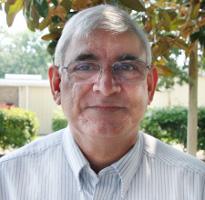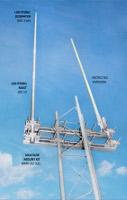Shocking Truth About Lightning: Q&A With Javier Castillo

Javier Castillo
ALEXANDRIA, VA—Lightning is one of nature’s most impressive displays of destructive power. Loud and visually overwhelming at times, lightning is chaotically beautiful.
No one knows this more than engineers who work for broadcasters with tall towers in locations where lightning is common. I personally witnessed lightning striking the Empire State Building three times during a storm, and it was pretty awesome to see.
Any operation that relies on a tower knows that it needs lightning protection, but how often do these safeguards need to be checked, maintained and replaced?
Javier Castillo is a lightning expert with LBA, a Greenville, N.C.-based consulting firm focusing on RF and wireless communications and applications. He has spent nearly 25 years consulting on lightning protection solutions worldwide and over the decades, has created proven hardware designs and lightning protection solutions. He has also served as an expert panelist and presenter on lightning protection before entities and groups in nearly every country in Latin America.
We talked to Javier about the best way to prepare for lightning.

A lightning bolt strikes the CN Tower in Toronto in 2008. (Photo credit: Flickr)
Get the TV Tech Newsletter
The professional video industry's #1 source for news, trends and product and tech information. Sign up below.
BE Extra: Broadcasters generally have tall towers that attract lightning, and lightning protection is taken seriously in this industry. But how often does a modern lightning protection system need to be checked and maintained? Are there any particular things to look for to determine that maintenance is needed right away?
Castillo: We suggest a visual inspection after major storms or observed lightning strikes. Lightning strike counters attached to the structure can be helpful. An annual visual inspection for arc burns or compromises to lighting or other systems, and a check of ground system integrity is also recommended. Microwave, STLs and similar systems on towers are more prone to deterioration and long-term damage from strikes than are high power systems.
BE Extra: The lightning rod has long been used to attract lightning and get the static charge to flow where you want it to flow instead of where it wants to flow. However, there are also systems that make an object (such as a tower) less likely to attract lightning. How does a system like that work? Is it appropriate for broadcasters?
Castillo: Static dissipation systems have emerged as useful to reducing the possibilities of strikes to protected towers. Anecdotal experience has shown them to be effective in averting as many as 90 percent of potential strikes. They are most effective when combined with conventional lightning rods that channel any strikes that do occur. Static dissipation systems should be customized to a particular tower and its appurtenances. (A paper on selection of static dissipaters is at here.)
BE Extra: Lightning also hits power lines and can flow into a building on electrical service wires. What can be done here to protect sensitive equipment inside a building from a power line strike?
Castillo: Proper grounding of all equipment, structures, and power components is essential. This is a complex subject and very site specific. There are many references on equipment grounding, in addition to the National Electrical Code and National Fire Protection lightning guidance. We recommend that station engineers study these references to ensure that their systems are safe and effective.

One of many LBA Lightning Protectors.
Click on the Image to Enlarge
BE Extra: If you’re a broadcaster with a tall and properly protected tower, where’s the safest place to be during a bad lightning storm?
Castillo: The safest place is in a building or vehicle under the tower and guy wires. These form a protective Faraday cage. However, don’t touch metal objects or stand or lay on the ground as so called “step voltages” in the ground can rise to killer levels during a strike!
BE Extra: If you know a bad storm is coming, are there any extra precautions that can be taken to prevent injuries, loss of life and damage to property?
Castillo: In a well-protected transmitter site, you shouldn’t have to take any special precautions. As a general matter, unused transmission lines should stay grounded, and unused equipment could be disconnected and unplugged.
BE Extra: Is there anything else we should know about lightning and lightning protection?
Castillo: Often overlooked is the safety of news teams, remote broadcasts and other outdoor station activities. Some outdoor equipment like satellite dishes and temporarily located production vans can be protected with lightning masts, but most other activities should be secured when thunder is heard, and shelter sought. Most newsgathering vehicles are safe if STL masts are lowered.
Bob Kovacs is the former Technology Editor for TV Tech and editor of Government Video. He is a long-time video engineer and writer, who now works as a video producer for a government agency. In 2020, Kovacs won several awards as the editor and co-producer of the short film "Rendezvous."

